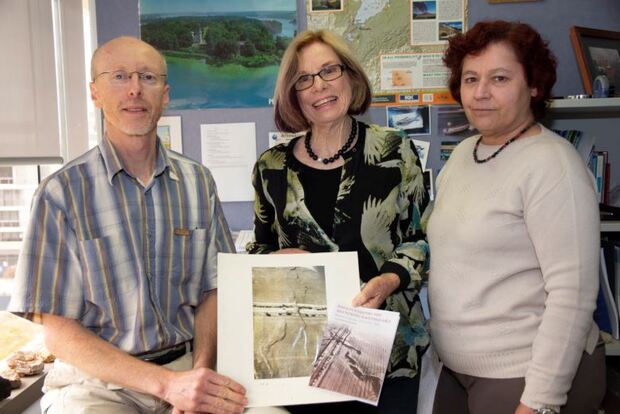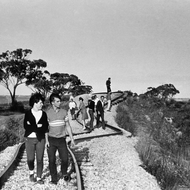Special free publication produced for event
| Date: | Friday, 12 October 2018 |
|---|
Locals recall an eerie feeling on the overcast, muggy Queen’s birthday holiday morning of 14 October 1968 in the wheatbelt town of Meckering, 130 km from Perth.
Livestock animals were acting strangely and birds were screeching, but none of the town’s 500 residents suspected the calamity that would engulf their community at 10.59 am.

Striking with the force of 10 atomic bombs similar to the one that destroyed Hiroshima in World War II, an earthquake measuring 6.9 on the Richter Scale flattened the small town in 40 seconds.
Amazingly, no-one was killed but 20 were injured, 50 homes were destroyed and shops, churches, buildings, sheds and water supplies were devastated.
The survivors were lucky that it was a public holiday and the school and shops were closed.
Major roads were impassable, telephone and power connections were cut and the damage bill reached $1.5 million (about $5 million today).
This Sunday 14 October, the Shire of Cunderdin and the community of Meckering, old and new, will commemorate the 50th anniversary of one of Australia’s most significant earthquakes.
The Department of Mines, Industry Regulation and Safety (DMIRS) has produced a special 30-page book that will be distributed free on the day to help people understand what happened 50 years ago and why.
The idea for the book grew from a request by the Shire of Cunderdin for information about the earthquake.
“Meckering 50yrs On” Event Co-ordinator Rebekah Burges, who was involved in early meetings with DMIRS’ Geological Survey of Western Australia geologists, is thrilled with the publication, Understanding the Meckering Earthquake.
“The department has certainly gone above and beyond anything we ever expected,” Rebekah said. “We had no idea that we would end up with something this good.”
Senior Geoscience Editor Dr Stephen White and retired Special Projects Senior Editor Jean Johnston, who worked with Geoscience Content Manager Dr Angela Riganti to produce the book, will make the trip to Meckering on Sunday to give copies to people commemorating the quake.
“We’re taking several hundred copies to Meckering,” Dr White said. “Another few hundred are earmarked for other events before and after Christmas and free downloads of pdfs of the book are available on the DMIRS website.”
Dr White said although the book summarised recent work that helps to understand the geological causes of the quake, this alone was not sufficient to predict when and where another earthquake might strike the region.
“All we can say is that yes, it could happen again, but no-one can say when or where and there would be very few warning signs, as evidenced by the quake just north of Walpole on 16 September,” he said.
Dr White said it was a mistake to assume that earthquakes were rare in an ancient landform like Australia.
“Actually, they’re not so rare, certainly less so than conventional wisdom would previously have said. This is part of what makes Western Australia’s earthquakes in the Meckering region so interesting,” he said.
Other large earthquakes in the region were felt at Calingiri on 10 March 1970 (magnitude 5.7) and Cadoux on 2 June 1979 (magnitude 6.1).
The Meckering earthquake was located in a well-documented zone of seismic activity which is the most active region in Australia, measuring roughly 300 by 500 km, about 150 km east of Perth and known as the South West Seismic Zone.
More than 12,000 earthquakes have been recorded in the area since September 2001, with most of these events being aftershocks of larger events.
Quality photos, colour diagrams, a geological map identifying the fault traces, and detailed explanations of how earthquakes happen have all been packaged into Understanding the Meckering Earthquake.
This compact colourful book will be of interest to residents, visitors and anyone who wants to know more about Western Australian geology.
Visitors to Meckering on Sunday will be able to tour the earthquake ruins and fault line and hear first-hand accounts of the earthquake from local residents.
The town’s revamped earthquake walk trail, a short distance from the town centre, will be open to visitors all day and there will be a free Scitech exhibition, science shows, and carnival rides for kids.
Entertainment will include performances by CMC Music Awards Female Artist of the Year Chelsea Basham, Meckering Primary School students and the Toodyay Ballet School.
A special beer called Richter Ale has been brewed for the occasion.
The commemorative beer is a reminder of the spirit of publican Gordon Berryman, who on the day of the earthquake, created a makeshift pub over the road from his ruined hotel that became known variously as the Quake Arms Hotel, the Rock‘n’Roll Pub and the Shake-Inn.
A free PDF of the book can be downloaded at www.dmp.wa.gov.au/ebookshop.

